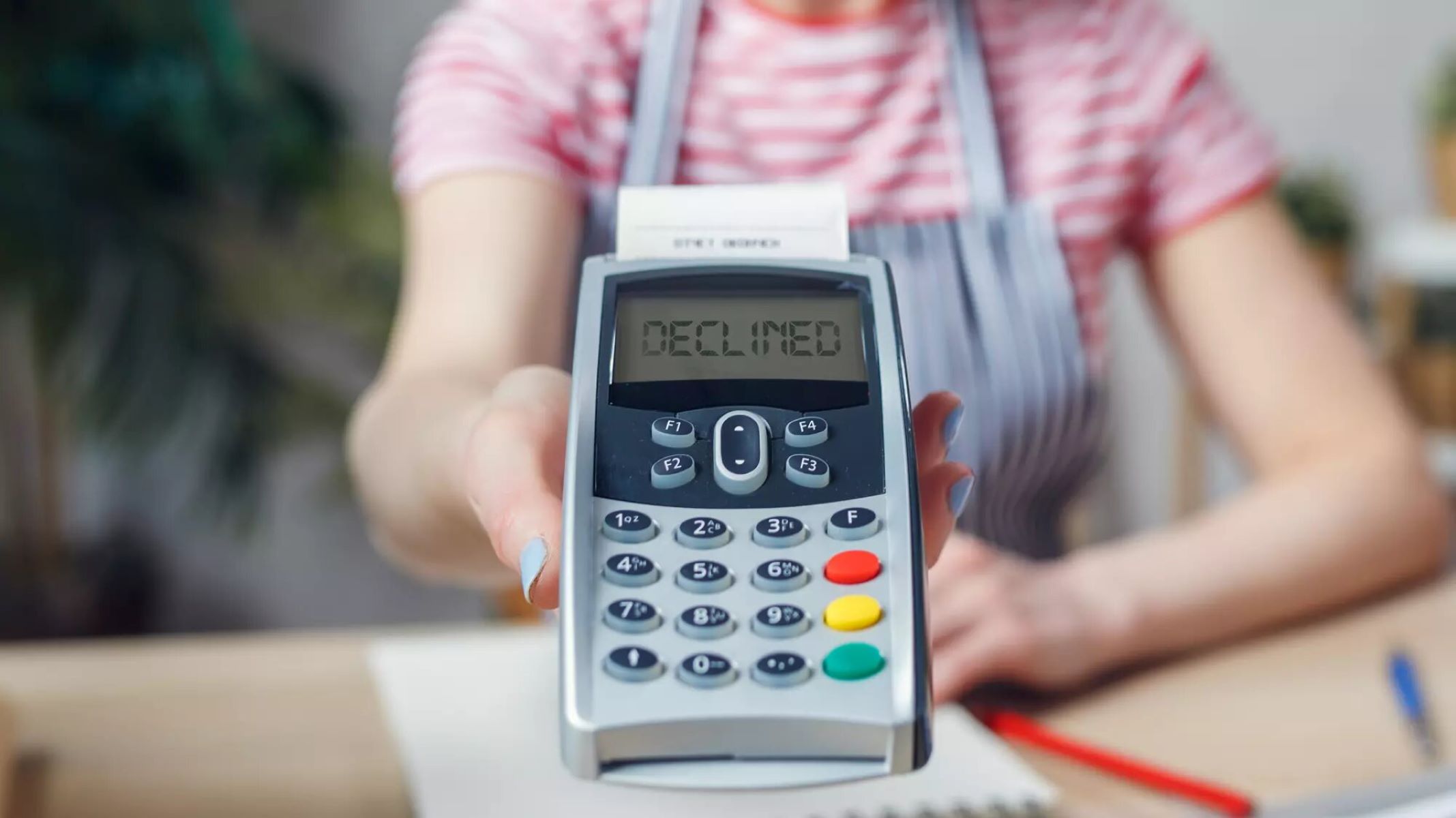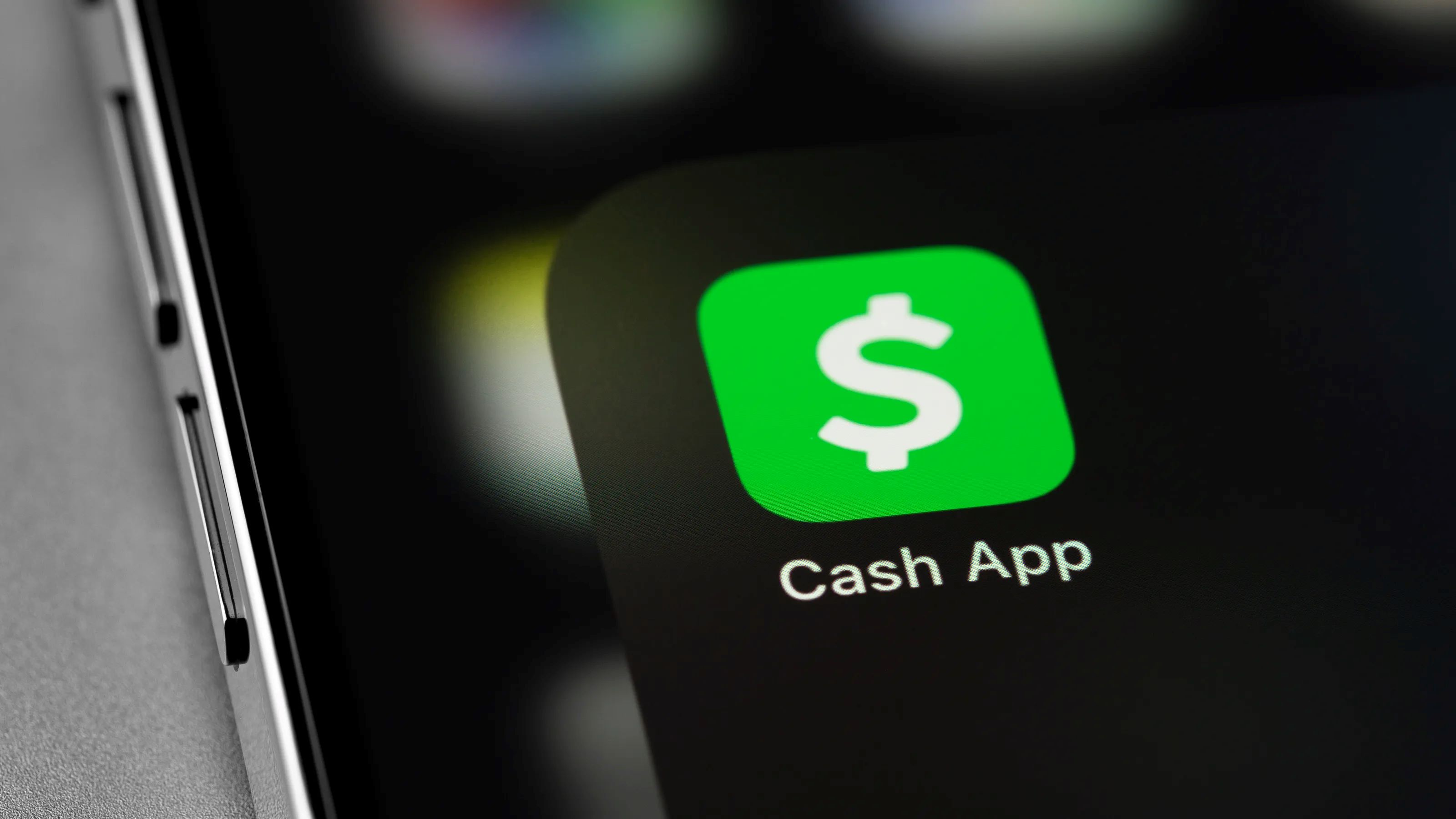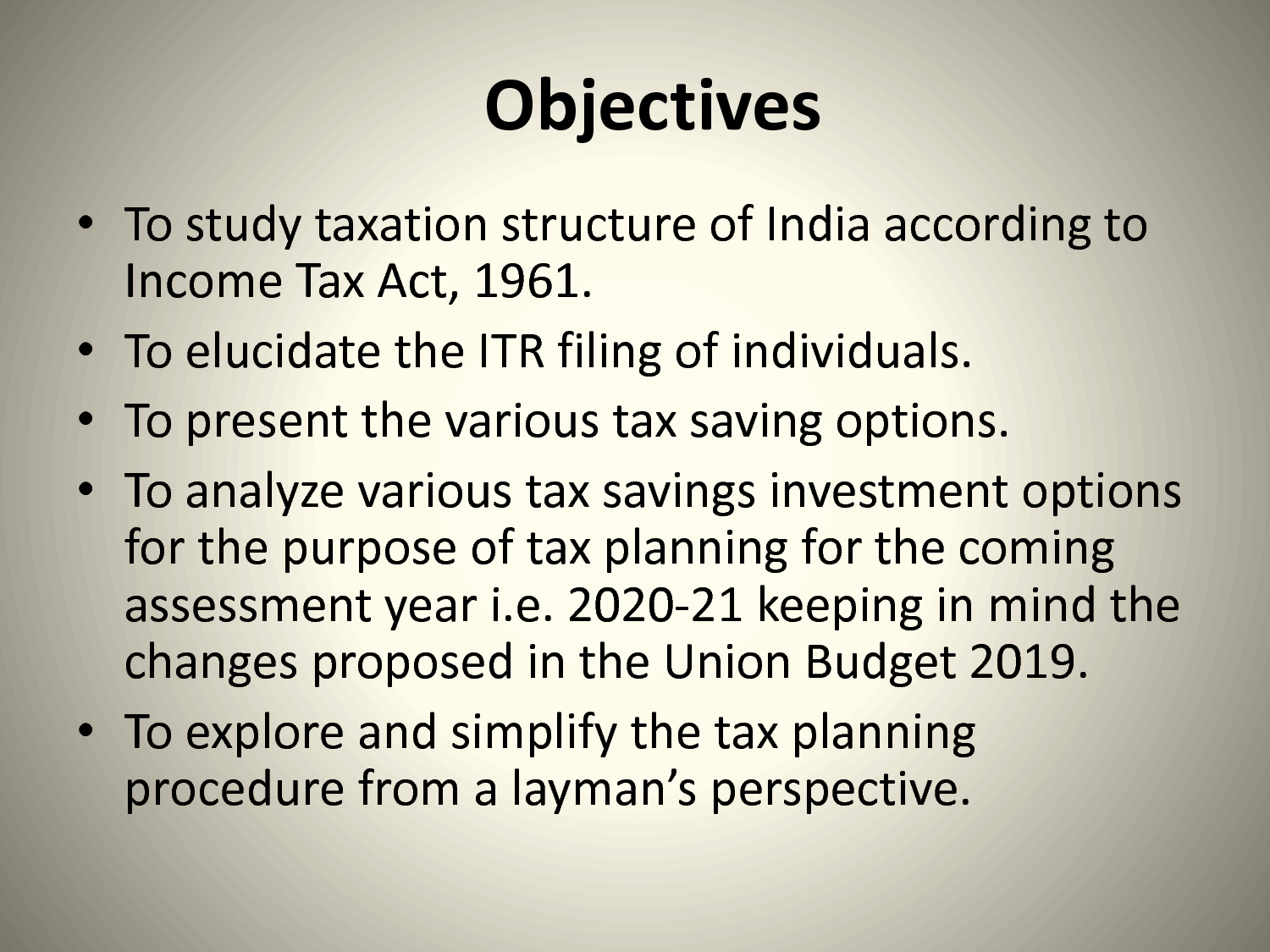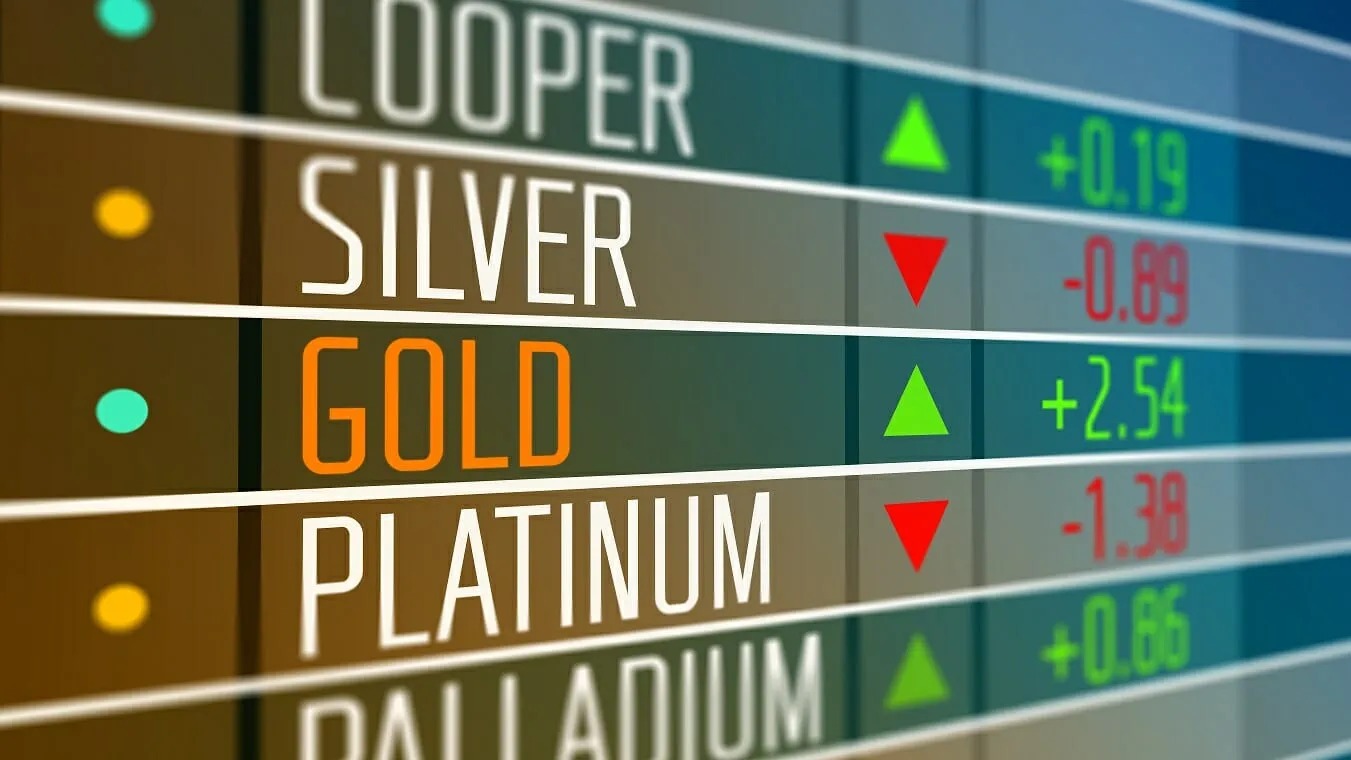

Finance
Why Would Credit Card Be Declined
Published: November 3, 2023
Having trouble with your credit card being declined? Discover the possible reasons behind it and find ways to resolve the issue. Finance-related tips and solutions await.
(Many of the links in this article redirect to a specific reviewed product. Your purchase of these products through affiliate links helps to generate commission for LiveWell, at no extra cost. Learn more)
Table of Contents
Possible Reasons for a Credit Card Being Declined
Having your credit card declined can be frustrating and embarrassing, especially when you’re in the midst of a purchase. Understanding the possible reasons for a credit card being declined can help you take appropriate action and avoid future issues. Here are some common reasons why your credit card might be declined:
-
Insufficient Funds
One of the most common reasons for a credit card being declined is insufficient funds in your account. If you try to make a purchase that exceeds your available credit, the transaction will be declined. It’s important to keep track of your spending and ensure that you have enough funds to cover your purchases.
-
Expired Card
If your credit card has expired, the issuing bank will automatically decline any transactions made with it. It’s crucial to keep track of the expiration date on your credit card and request a replacement before it expires.
-
Incorrect Card Information
Entering incorrect credit card information, such as the card number, expiration date, or CVV code, can result in a declined transaction. Double-check the information you’ve entered to ensure it is accurate.
-
Suspicious Activity
Banks have sophisticated fraud detection systems in place that monitor unusual spending patterns or suspicious activity on your credit card. If the bank detects any potential fraud, they may temporarily block your card or decline certain transactions. Contact your bank to resolve any suspected fraudulent activity.
-
Credit Limit Reached
If you’ve reached your credit limit, your card will be declined until you pay off some of the balance and free up available credit. Keeping an eye on your credit utilization and making timely payments can help avoid reaching the limit.
-
Technical Issues
In rare cases, technical issues with the payment processor or the merchant’s system can cause your credit card to be declined. If you’re confident in your card’s validity and there are no other apparent issues, try using a different payment method or contact the merchant.
-
Card Blocked by the Bank
In some situations, the bank may choose to block your credit card due to various reasons such as suspected fraud, late payments, or a change in your financial circumstances. Contact your bank to resolve any issues that may have led to your card being blocked.
-
Merchant Restrictions
Merchants may impose certain restrictions on credit card transactions, such as minimum purchase amounts or limitations on certain types of purchases. If your transaction falls outside these restrictions, your card may be declined.
-
International Transaction Restrictions
If you’re trying to make a purchase in a foreign country, your credit card may be declined due to international transaction restrictions. Check with your bank beforehand to ensure your card is enabled for international use.
-
Identity Verification Issues
Occasionally, your card may be declined if the bank or credit card company is unable to verify your identity. This can occur if you’ve recently moved, changed your contact details, or if there is mismatched information. Contact your credit card issuer to update your information if necessary.
By being aware of these possible reasons for a credit card being declined, you can take proactive measures to prevent such incidents and resolve any issues efficiently. Remember, if your credit card is consistently being declined for inexplicable reasons, it’s important to contact your bank or credit card issuer for assistance.
Insufficient Funds
One of the most common reasons for a credit card being declined is insufficient funds in your account. It can be incredibly frustrating to have your card declined when you’re in the checkout line, but it’s important to understand why this happens.
When you make a purchase with a credit card, the issuing bank checks your available credit to ensure that you have enough funds to cover the transaction. If you have maxed out your credit limit or come close to it, there won’t be enough available credit to complete the purchase. As a result, the transaction will be declined.
If you find yourself in a situation where your credit card is declined due to insufficient funds, there are a few steps you can take to resolve the issue:
- Check your current credit card balance: Look up your recent transactions or log into your online banking portal to see if there are any pending charges or outstanding balances that need to be paid. It’s possible that you may have forgotten about a previous purchase or have a pending transaction that hasn’t cleared yet.
- Make a payment: If you discover that you have a balance on your credit card, consider making a payment to free up some available credit. Making a payment towards your outstanding balance will increase your available credit and reduce the likelihood of future declines.
- Monitor your credit utilization: Credit utilization is the percentage of your available credit that you are using. Ideally, you should aim to keep your credit utilization below 30% to maintain a healthy credit score. If you frequently find yourself reaching or exceeding your credit limit, it may be time to reevaluate your spending habits and explore strategies to reduce your reliance on credit.
- Consider alternative payment methods: If you need to make a purchase immediately but don’t have sufficient funds on your credit card, consider using another payment method such as a debit card or cash. It’s always a good idea to have multiple payment options available to avoid any inconvenience at the point of sale.
- Contact your credit card issuer: If you believe there is an error or discrepancy regarding your available credit or if you’re consistently facing issues with insufficient funds, it’s recommended to get in touch with your credit card issuer. They may be able to provide insights on your account and offer guidance on how to avoid future declines.
By proactively managing your credit card usage, monitoring your balances, and utilizing available credit responsibly, you can avoid the frustration of having your credit card declined due to insufficient funds. Remember, maintaining a healthy financial position and staying within your means is crucial for long-term financial well-being.
Expired Card
If your credit card has expired, it will automatically be declined when you try to make a purchase. Expiration dates are put in place to ensure the security and validity of credit cards. Understanding why a card expires and what steps you can take to address the issue can help you avoid any inconveniences.
Credit cards have expiration dates typically printed on the front of the card. These expiry dates are set by the issuing bank and are usually within a few years of the card’s issuance. The purpose of expiration dates is to encourage cardholders to regularly update their cards to newer and more secure versions.
When your credit card expires, the issuing bank will usually send you a replacement card before the expiration date. However, it’s possible that the replacement card might get lost in the mail or you might overlook the need to activate it, leading to a situation where your card is declined due to expiration.
If your card is declined due to expiration, here are some steps you can take to address the issue:
- Check the expiration date: Double-check the date on your credit card to ensure that it has not already expired. If it has, you will need to contact your bank or credit card issuer to request a new card.
- Contact your bank or issuer: If your credit card has not yet expired but is still being declined, it’s possible that there may be an issue with the card itself or with your account. Contact your bank or credit card issuer to inquire about the decline and seek resolution.
- Activate your replacement card: If you have received a replacement card but have not activated it, follow the instructions provided by your bank or issuer to activate the card. Activation is typically done through a phone call or online portal.
- Update your payment information: If you have recently received a new credit card with a different expiration date, make sure to update your payment information wherever your card is saved or linked, such as online shopping accounts, subscription services, and automatic bill payments. Failure to update your information could result in continued declines.
It’s important to keep in mind that credit cards have expiration dates for security purposes. Regularly checking the expiration status of your card and proactively taking steps to ensure its replacement or renewal will help you avoid any issues or disruptions when making purchases.
Incorrect Card Information
Entering incorrect card information is a common reason for a credit card to be declined during a transaction. Even a small error, such as mistyping a digit or missing a character, can result in a declined transaction. It’s important to verify and ensure that the card information you provide is accurate to avoid any unnecessary hassles.
Here are some key points to consider if you encounter a declined credit card due to incorrect card information:
1. Double-check your card details: Take a moment to review the card number, expiration date, and CVV code you entered during the transaction. Ensure that each field is filled in correctly and completely. Pay attention to any spaces or hyphens in the card number as well.
2. Verify card type compatibility: Some merchants may only accept certain types of credit cards, such as Visa, Mastercard, or American Express. If your card is not compatible with the merchant’s payment system, your transaction may be declined. Confirm that the type of card you are using matches the accepted forms of payment.
3. Update payment methods: If you frequently encounter issues with incorrect card information, consider updating your payment information with the merchant or online retailer. This ensures that your correct card details are saved and reduces the chances of errors during future transactions.
4. Verify billing address: Some online retailers require the billing address associated with your credit card to match the address on file with the issuing bank. If your billing address has recently changed or if you have multiple addresses on file, make sure to provide the correct billing address to avoid a declined transaction.
5. Contact your credit card issuer: If you have ruled out any mistakes on your part and are consistently experiencing issues with incorrect card information, it’s advisable to contact your credit card issuer. They can assist in verifying and correcting any errors or potential issues with your account.
It’s crucial to be meticulous when entering your credit card details to prevent unnecessary rejections. Paying careful attention to accuracy in card information will streamline your purchasing experience, reduce the frustration of declined transactions, and help ensure a smooth payment process.
Suspicious Activity
Suspicious activity on your credit card can trigger a decline as banks employ advanced fraud detection systems to protect cardholders. While it can be inconvenient, these measures are in place to safeguard your financial information and prevent unauthorized transactions.
If your credit card is declined due to suspected fraud or suspicious activity, here’s what you can do:
1. Contact your bank or credit card issuer: Reach out to your bank or credit card issuer immediately if you receive a decline notification. They can provide details on the flagged activity and help determine whether it’s genuine or a mistake.
2. Verify recent transactions: Review your recent credit card statements or online transaction history to identify any unauthorized charges or suspicious purchases. Report any fraudulent or unrecognized transactions to your bank and follow their instructions for dispute resolution.
3. Update your contact information: Ensure that your bank has your current phone number and email address on file. They may need to contact you to confirm the legitimacy of a transaction or to provide information on how to resolve the issue.
4. Enable transaction alerts: Many banks offer real-time transaction alerts via email, SMS, or mobile app notifications. Enabling these alerts will notify you promptly of any suspicious activity, allowing you to take immediate action.
5. Set travel notifications: If you plan to travel domestically or internationally, notify your bank beforehand. Unusual activity outside of your regular spending patterns can trigger a decline. By informing your bank about your travel plans, you can help prevent any false declines during your trip.
It’s important to remember that banks prioritize customer security and may err on the side of caution. While an inconvenience, it’s always better to confirm legitimate transactions and address any potential fraudulent activity promptly. By maintaining open communication with your bank and closely monitoring your credit card activity, you can mitigate the impact of suspicious activity on your card and protect yourself from financial loss.
Credit Limit Reached
Reaching your credit limit is a common reason for a credit card to be declined. Each credit card comes with a predefined credit limit, which represents the maximum amount you can borrow. It’s essential to understand how credit limits work and manage your spending accordingly to avoid any disruptions at the point of sale.
If your credit card is declined due to reaching your credit limit, here are the steps you can take:
1. Review your current balance: Check your credit card balance, either through your online banking portal or by contacting your bank directly. Knowing your outstanding balance will help you assess how close you are to reaching your credit limit.
2. Make a payment: If your balance is close to, or has exceeded, your credit limit, consider making a payment to bring the balance down. By reducing the amount owed, you can free up available credit and continue using your card without disruption.
3. Request a credit limit increase: If you frequently find yourself reaching your credit limit, you may want to consider requesting a credit limit increase from your credit card issuer. This can provide you with more available credit and potentially improve your credit utilization ratio.
4. Monitor your credit utilization ratio: The credit utilization ratio is the percentage of your available credit that you are currently using. It’s generally advisable to keep this ratio below 30% to maintain a healthy credit score. Tracking your credit utilization and making timely payments can help you avoid reaching your credit limit.
5. Consider multiple credit cards or alternative payment methods: If you consistently find yourself maxing out your credit limit on a single card, it might be worth considering obtaining multiple cards or exploring alternative payment methods. This can provide you with more flexibility and ensure you have backup options available for your purchases.
Remember, it’s important to use credit responsibly and avoid excessive borrowing. Managing your credit limit, regularly making payments, and keeping track of your balances will help you maintain a healthy financial position and reduce the likelihood of experiencing a declined credit card due to reaching your credit limit.
Technical Issues
While not as common as other reasons, technical issues can sometimes lead to a credit card being declined. These issues can range from problems with the payment processor used by the merchant to glitches in the merchant’s own system. Although frustrating, there are steps you can take to address technical issues and complete your transaction smoothly.
If you experience a declined credit card due to technical issues, here’s what you can do:
1. Retry the transaction: In some instances, a declined transaction may be the result of a temporary glitch. Before taking any further action, try making the purchase again after a few minutes. Sometimes, the issue may resolve itself, and the transaction will go through successfully.
2. Use a different payment method: If the technical issue persists, consider using an alternative payment method such as a different credit card, debit card, or mobile payment app. This can help you complete the purchase without having to wait for the technical issue to be resolved.
3. Contact the merchant: If you’re experiencing technical difficulties during an online transaction, reach out to the merchant’s customer support. Inform them of the issue you’re facing and ask if they can provide any guidance or assistance. They may be able to resolve the problem or offer alternative solutions.
4. Contact your bank or credit card issuer: If the issue persists or you suspect there may be a problem with your credit card, contact your bank or credit card issuer. They can check if there are any known technical issues or investigate if there’s a problem specific to your card or account.
5. Try a different device or browser: Occasionally, technical issues may arise from compatibility problems with the device or browser you’re using. Attempt the transaction on a different device or using an alternative browser to see if the issue persists. This can help you identify if the problem lies with your current setup.
Technical issues, though frustrating, are often temporary and can be resolved with a bit of patience and troubleshooting. By exploring different options, contacting the relevant parties, and using alternative payment methods, you can overcome technical hurdles and complete your purchase successfully.
Card Blocked by the Bank
In certain situations, a credit card may be blocked by the bank, resulting in declined transactions. Banks employ security measures to protect cardholders from potential fraud or unauthorized use of their credit cards. While it can be inconvenient, understanding why a card may be blocked and taking appropriate action is crucial.
If your credit card is declined due to being blocked by the bank, consider the following steps:
1. Contact your bank: Reach out to your bank or credit card issuer as soon as possible. They can provide insights into why your card was blocked and offer guidance on how to resolve the issue.
2. Verify your identity: The bank may have blocked your card due to suspicious or unusual activity. In such cases, they may require you to verify your identity or provide additional information for security purposes. Cooperate with the bank’s requests to unlock your card.
3. Resolve any outstanding issues: If your card was blocked due to late or missed payments, make arrangements to settle any outstanding balances. Timely payments can help reinstate your card and prevent future blocks.
4. Report lost or stolen cards: If your card was blocked due to loss, theft, or suspicion of compromise, report it to your bank immediately. They can cancel the card and issue a new one to safeguard your finances.
5. Follow security recommendations: Your bank may provide additional security recommendations to prevent future blocks, such as updating passwords, enabling two-factor authentication, or being vigilant about phishing attempts. Follow these recommendations to ensure the ongoing security of your credit card.
Remember, banks prioritize the security of their customers, which is why they may take precautionary measures to block a card. By understanding the reasons for the block and cooperating with your bank, you can restore access to your card and continue using it with confidence.
Merchant Restrictions
Merchant restrictions can sometimes lead to a credit card being declined. Merchants may impose certain limitations or requirements on credit card transactions, which can result in a declined payment if these conditions are not met. It’s important to be aware of these restrictions to ensure a smooth purchasing experience.
If you encounter a declined credit card due to merchant restrictions, consider the following steps:
1. Read the merchant’s terms and conditions: Before making a purchase, familiarize yourself with the merchant’s terms and conditions, particularly those related to payment methods. Look for any specific restrictions or requirements that may affect credit card transactions.
2. Contact the merchant: If your credit card is declined and you believe it may be due to merchant restrictions, get in touch with their customer support. They can provide clarification on their payment policies and guide you on alternative payment methods if necessary.
3. Consider other payment options: If the merchant does not accept credit cards or imposes limitations that prevent you from using your credit card, explore alternative payment methods. This could include using a different credit card, a debit card, or other forms of electronic payment such as PayPal or mobile payments.
4. Check for minimum purchase requirements: Some merchants may have minimum purchase thresholds for credit card transactions. If your transaction amount falls below their specified limit, your credit card may be declined. Verify and adjust your purchase amount, or consider adding additional items to meet the minimum requirement.
5. Plan ahead for international purchases: If you are making purchases from international merchants, be aware that some credit cards may have limitations or additional fees for foreign transactions. Check with your credit card provider for any specific restrictions or charges related to international use.
Understanding and adhering to merchant restrictions can save you from the frustration of a declined credit card. By familiarizing yourself with the merchant’s payment policies and considering alternative payment methods when necessary, you can ensure a successful transaction.
International Transaction Restrictions
If you’re traveling abroad or making purchases from international merchants, it’s important to be aware of potential restrictions on international credit card transactions. Many credit card issuers implement security measures to protect cardholders from fraudulent activities associated with foreign transactions. However, these measures can sometimes lead to a declined credit card when attempting to make an international purchase.
If your credit card is declined due to international transaction restrictions, consider the following steps:
1. Notify your bank: Before traveling internationally, inform your bank about your plans. Let them know the countries you will be visiting and the duration of your trip. By doing so, they can make a note in your account to prevent any unnecessary blocks on your card.
2. Verify your card for international use: Ensure that your credit card is enabled for international transactions. Some banks automatically enable this feature, while others require you to activate it manually. Check with your bank to confirm the status of your card for international use.
3. Check for transaction fees: Find out if your credit card charges any foreign transaction fees. These fees can vary between issuers and can add up over time. Consider using a credit card that offers no or low foreign transaction fees to minimize costs.
4. Carry an alternative payment method: It’s always a good idea to have a backup plan when traveling abroad. Carry a debit card or a pre-loaded travel card as an alternative payment method. These cards are specifically designed for international use and can provide added convenience and security.
5. Contact your bank for resolution: If your credit card is declined during an international transaction despite taking these precautions, contact your bank or credit card issuer immediately. They can help troubleshoot the issue and provide a solution that allows you to make the necessary purchases.
By proactively addressing international transaction restrictions and taking the necessary steps to ensure a smooth overseas experience, you can avoid the frustration of a declined credit card while traveling. Remember to plan ahead, notify your bank, and consider carrying alternative payment methods to ease your financial transactions during your international journey.
Identity Verification Issues
Identity verification issues can sometimes lead to a declined credit card. Banks and credit card issuers have security measures in place to protect cardholders from fraudulent transactions. If there are any inconsistencies or doubts about your identity, your credit card may be declined as a precautionary measure.
If your credit card is declined due to identity verification issues, consider the following steps:
1. Contact your bank or credit card issuer: Reach out to your bank or credit card issuer to find out the specific reason for the identity verification issue. They can provide guidance on how to proceed and resolve the issue.
2. Verify and update your personal information: Check that the personal information associated with your credit card, such as your name, address, and contact details, is correct and up to date. If there are any inconsistencies, contact your bank to update the information.
3. Confirm your billing address: Merchants often require the billing address associated with your credit card to match the address on file with your bank. Double-check that the billing address you entered during the transaction matches the address on your credit card statement or online banking portal.
4. Provide additional documentation: In some cases, you may be required to provide additional documentation to verify your identity. This could include a copy of your identification card, passport, or proof of address. Follow the instructions provided by your bank or credit card issuer to submit the necessary documents.
5. Cooperate with identification verification processes: Banks and credit card issuers may employ additional security measures, such as sending a one-time password (OTP) to your registered mobile number or requesting additional authentication during the transaction. Cooperate with these processes to ensure a successful purchase.
Addressing identity verification issues promptly is crucial to avoid further disruptions and ensure the smooth functioning of your credit card. By proactively verifying and updating your personal information and cooperating with the authentication processes, you can resolve identity verification issues and resume using your credit card.














